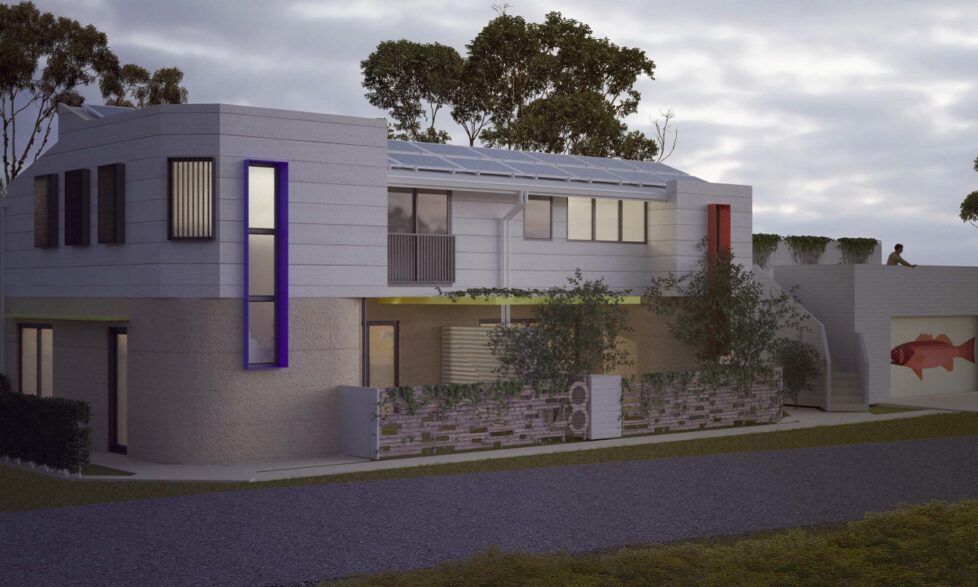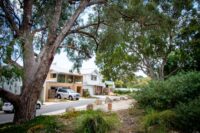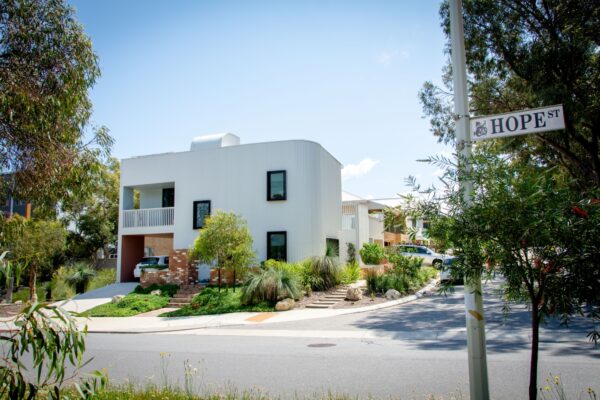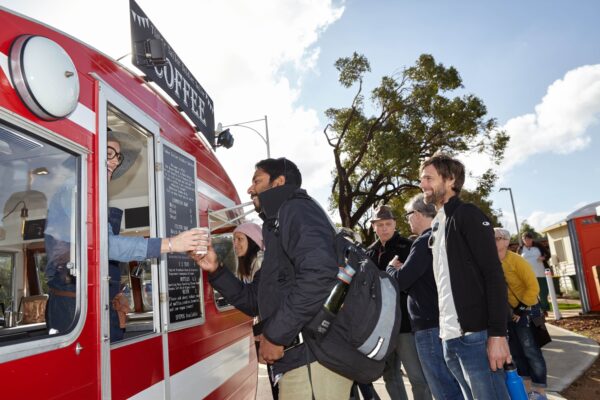Many parts of WGV at White Gum Valley, a One Planet Community in Fremantle, Western Australia led by LandCorp, are under construction. It’s a diverse self-build development, designed to create a vibrant community of over 80 homes with a people-friendly, rather than car-dominated, layout and lots of green space. The project includes single lots for purchase, so people can build their own homes, as well as bigger lots for developers to build apartments.
As a One Planet Community, we review its progress every year and through this process I was introduced to Craig Bailey, who is building a number of the single-dwelling units.
An aside: for those unfamiliar with construction in Australia, ‘self-build’ is relatively common. In practice, this means buying a plot of land and then bringing in a house-building company with a turn-key product that is assembled onsite with minimal adaptation to the specifics of the site.
In order to ensure that the self-build projects at WGV took account of the local context and One Planet Living, LandCorp developed a detailed set of design guidelines that the homeowners needed to adhere to.
This is where Craig enters the picture. He has nearly 50 years’ experience in construction in Australia, India and North America and set up Ecovision Homes to help people build more sustainable homes with a bespoke solution.
When he was contacted by a friend who was interested in buying one of the plots at WGV - but daunted by its design guidelines - he realised that, at last, parts of the industry were beginning to push construction trends in his direction.
While Ecovision has seven steps to creating a sustainable home, one of which is about creating a healthy home, in my conversation with Craig he summed it up in two concepts: minimising waste and getting closer to nature.
“I’m really impressed with what LandCorp is doing at WGV”, he said. “I feels that the approach of sustainable design guidance is helping to educate the homebuyer and will also set a new norm in similar developments.
“I used the centralised waste management facilities that LandCorp had arranged to be onsite. While it cost a little more than the off-site recycling company I usually use, it was more convenient. I also found that the required on-site sorting of construction waste actually made me more aware of material use and drove me to be more efficient in my use of resources.”
He’s obviously been doing a good job because he’s now building another four or so houses onsite!
It’s also worth noting that while Craig’s role at WGV is in designing and building single homes, he was just as enthusiastic about the community approach taken at WGV and felt this could have a really significant impact on people’s happiness.
“At first, I thought that One Planet Living was just some ‘sexy marketing’. But I’ve since realised that using the One Planet Living framework helped to drive the design guidelines for the individual homes and the community-centred approach of this pioneering development.”
We're really excited to see WGV's progress as it develops over the next few years. It's a great example of how new-build developments are able to achieve One Planet Living - and support wider environmental goals. A recent paper in Urban Planning shares how the community is contributing to achieving the Paris Agreement and the Sustainable Development Goals (SDGs).
WGV's One Planet Annual Review of its progress reveals that the community is on-track to achieve its targets – from creating a happy, healthy community to reaching zero carbon energy.





